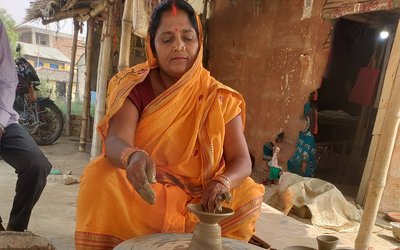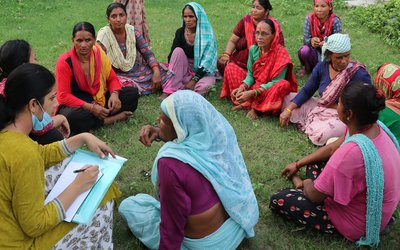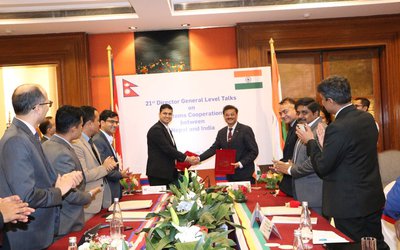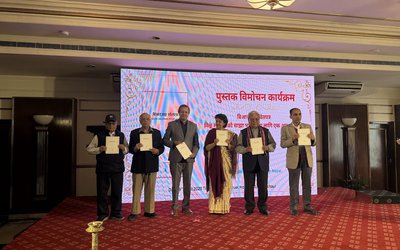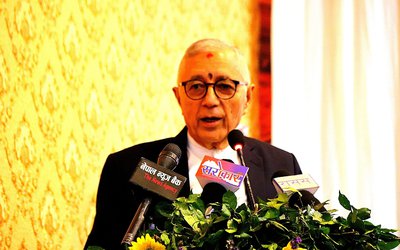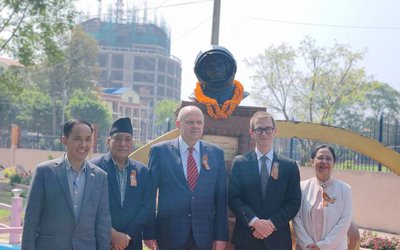It was in the 1950s that Han Suyin visited Nepal, stayed at Boris’s Royal Hotel and wrote ‘The Mountain is Young’. Yes our mountains, the Himalyas are young, being raised upwards as a result of one plate from the South pushing against the one up North and thus rising to the skies. The height of Mt. Everest, currently 8848 metres high is increasing a little by little every year.
The mountainous terrain of Nepal has been, from around the end of 1000 AD or the start of the second millennium, a refuge destination for people fleeing the invaders of India. Later after the British came and took over the Indian continent from the many local rulers that then existed, they had initially only a momentary interest in Nepal. Perhaps because of their friendship and thankfulness for Jung Bahadur’s help at the time of the Indian Mutiny of 1857, resulting which the British were able to prolong their stay by ninety years in India till 1947. It is also rumoured that the one reason why the British were not keen to conquer Nepal was that it was not economically advantageous. Instead they went on to build the narrow gauge railway, develop the hill station of Darjeeling in the East, and to boost their trade with Tibet. The Western hill stations of Mussourie and Shimla also sprang up to enable them to get away from the hot Indian summer. The old Vice Regal Lodge at Simla is a reminder of their Imperial presence.
This poor mountainous country of ours has always been savaged by onslaughts of Nature. Gen. Brahma SJB Rana’s book on the earthquake of 1890 (1934 BS) lists it all. He notes that the dates of the devastating earthquakes which struck Nepal from 1310 BS, were in 1316 BS, 1464 BS, 1738 BS, 1866 BS and 1890 BS. Thus whilst our wishful thinking imagines that a major quake occurs every 80-90 years, past experience has shown that a repetition of such disasters can occur in a shorter period of time. Some geological authorities have even predicted that our Himalayan region may be subject to another big bang within the next five to ten years.
The cause for worry, following the earthquake of April 2015 (2072 BS) is that not much of the reconstruction work necessitated has been done. The poor and the affected in many parts of Nepal are only now receiving an instalment of what is their right. The official promise at the time of the catastrophe was that aid would be distributed after the monsoons of 2015 and before the winter of that year. There was not only delay in the distribution of relief materials received from worldwide sources but a substantial portion was damaged and had to be thrown away because of inaction of the part of the authorities concerned. Donated rice is said to have been sold! Well two monsoons are now nearly over but the aid has still to be fully distributed.
Following the earthquake the forecast was that during the coming rainy season there would be massive landslides and highway obstructions. Perhaps because of extensive rainfall this year, one is reading daily reports of landslides, floods and deaths of Nepalis in our newspapers. The Bhotekoshi River has extensively affected travel to and from Tatopani. Roads going to Terathum and Jomsom or Mugling are blocked by landslides. Some tracks and even highways have been swept away by the raging rivers. The Mid-Hill Highway and the partially completed Hulaki Highway are bogged down and obstructed in parts. Of course a lot of the damage to our roads is due invariably to the shoddy work that is always done at the eleventh hour of the financial year to gobble up the allotted budget by the favoured or the politically blessed contractor! He is ever in position to be lackadaisical about his performance.
One cannot deny that our country has not moved forward. At the end of World War I, our population was 5.5 millions. Today it stands at 29 million, almost a six-fold increase. Much change has taken place during the course of the last 65 years, following the ushering in of democracy in 1950. Thousands of Nepalis have gone to various part of the world, become successful and want to be involved as NRNs to help Nepal step into the 21st Century.
Within Nepal many of our citizens are leaving the rural areas to come to towns in search of work and perhaps to go abroad to do so. In 1947, there were just 4 nagarpalikas or municipalities in the whole country, three in the Kathmandu valley and one at Biratnagar. The figure later rose to 15 and then reached 58 in 1991 at the time of the census. Then in May and Dec. 2016 two increases of 72 each time took place to make a grand total of 191 designated towns countrywide.
This urbanisation is a worldwide trend and cannot be stopped. With this trend one will hopefully get a more enlightened populace, aware of their rights – be it human, health, educational or political. It was therefore heartening to read in the Himalaya Times (Nepali) of 27th July 2016 that the Government of Nepal is going ahead to establish a total of ten new cities, having a population of at least one lakh each along the Mid-Hills Highway starting from Phidim in Panchthar in the East to Patan at Baitadi in the West. The twist in the tale is that this programme was started five years age, but as the three firms who responded submitted the same proposal, they were all blacklisted! Now the plan for the 10 cities has been revived and one hopes that something will come out of it.
The author writes fiction under the name of Mani Dixit. Website: www.hdixit.org.np. Twitter: @manidixithd

Hemang Dixit
The author writes fiction under the name of Mani Dixit. Website: www.hdixit.org.np. Twitter: @manidixithd
- Top Heavy
- Sep 20, 2023
- Most Able?
- Sep 04, 2023
- Changing Times
- Aug 21, 2023
- Nepali Shenanigans
- Aug 03, 2023
- Budget Naataks
- Jun 29, 2023


